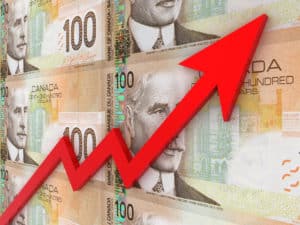With all the carnage in the energy space, it’s little surprise that many of the top stocks in the sector have slashed their dividends. This has left dividend investors in a bit of a pickle. For years, investors have enjoyed terrific yields from Canada’s energy producers, ranging anywhere from 1-2% from the best in the sector to up to 10% from the companies the market viewed as risky.
Investors have reacted in a few different ways. Some are avoiding the sector completely, content to wait out the storm in other parts of the market. Some are playing the energy sector in a different way by buying the pipeline companies. And some are fleeing to safety in some of the best companies in the space, loading up on shares of Suncor or Imperial Oil.
Another company investors view as high quality has been Husky Energy Inc. (TSX:HSE), one of Canada’s larger oil sands producers. And unlike its large-cap peers, it gives a much more generous dividend of 5.4%. It’s obvious to see why that’s attractive to a dividend investor. But can Husky maintain that payout? Let’s have a closer look.
All about the free cash flow
As you can imagine, Husky’s ability to generate cash flow has taken a very large hit with the price of crude collapsing.
Through the first two quarters of 2015, Husky has been able to generate $1.77 billion in cash from operations, compared to some $2.9 billion in the same period last year. Capital expenditures are down, but they still came in at $1.56 billion. That leaves $210 million available in free cash flow to pay the dividend, which actually puts Husky in a much better position than many of its peers who are free cash flow negative.
Unfortunately, $210 million isn’t enough to pay the dividend. Husky shelled out $600 million in dividends through the first half of 2015. That’s a shortfall of nearly $400 million, which has largely been funded through new debt. Thus far in 2015, Husky has issued $621 million in new debt, as well as getting $340 million in share sales.
At this point, Husky’s balance sheet is strong enough to handle the extra borrowing. It owes just $6.2 billion in total debt, plus another $874 million in preferred shares. That compares to equity of nearly $21 billion. And if it needs to keep borrowing, it has $3.4 billion in unused credit facilities. But is it prudent to use that available debt? Borrowing to pay dividends is unsustainable over the long term, especially if the price of crude remains low.
Husky’s slim free cash flow could be put to much better use; it could either invest in new projects or make acquisitions at fire sale prices.
The better way to get yield from Husky
Investors looking strictly for income from Husky are better off to check out the company’s preferred shares. Specifically, I like the Series 3 preferred shares, which trade under the ticker symbol HSE.PR.C.
These shares were just issued in December and have a current yield of 5.5%. This yield is locked in until late 2019, when it resets at whatever the Government of Canada five-year bond yields, plus 3.13%. Based on the price now, the market is expecting the yield on these preferred shares to stay about the same when they reset in 2019.
Preferred shares are almost like bonds. The last thing a company like Husky wants is to stop paying the dividend on the preferred shares, since that will send a very loud signal to the bond market. But it has no such commitment to the common share dividend.
If you’re looking for sustainable dividends from the sector, Husky’s preferred shares are the much safer choice. If crude stays low, the common share dividend will eventually be cut.







